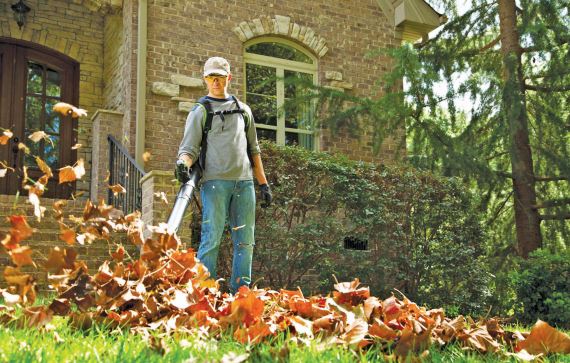 When summer heat turns to the crisp air of fall, it’s time to focus on some essential lawn care and home maintenance tasks that will see you through the winter.
When summer heat turns to the crisp air of fall, it’s time to focus on some essential lawn care and home maintenance tasks that will see you through the winter.
Autumn Lawn Care Basics: Fall is a great time for new grass seed to take root, so consider reseeding in selected areas. Reseeding also eliminates areas for weeds to grow in the spring. Fertilize your lawn one more time with a high-nitrogen fertilizer to encourage root growth.
Look for a lawn fertilizer labeled “winterizing.” It’s also a good idea to rake leaves and debris off your lawn in the fall. Put some muscle into it, and rake out any areas where heavy thatch has built up.
Cut your lawn one last time after it has stopped growing, but before the first snow. Adjust your mower setting to cut your lawn to about one inch. Lawn care experts suggest doing the final mowing with a bagger to pick up cut grass, stray leaves and other debris, and also to leave fewer places for snow mold to develop.
Fight Snow Mold: Snow mold is one of the most common lawn diseases,
and typically it shows up in the spring. As the snow melts, it uncovers a lawn that has spent several months hidden under a cold blanket of white, with little air and no sun.
In its cold, wet, and dark environment, snow mold slowly forms, leaving blades of grass dead and brown. New grasses will sprout up behind it, but unless you vigorously rake it away, the new growth will be slow and thin, so it’s a good idea to over-seed now.
Consider Aerating Your Lawn: It also may be wise to aerate your lawn. Aerating is a great way to reduce thatch, loosen up compacted soils and pave the way for water and nutrients to reach the roots of your grass.
Even with meticulous care, lawns can thin out and lose color due to excessive thatch buildup, hard or compacted soils, or periods of high temperature, high humidity, or drought. According to The Lawn Institute, more than two-thirds of American lawns are growing on compacted soils. These soils slowly reduce the amount of oxygen contained in the soil, thus retarding the penetration of both water and nutrients.
Aerating and over-seeding is recognized by experts as the best treatment to control thatch, reduce compaction, fill in bare spots and revitalize growth.
Maintain Your Gutters: Remove all debris from your gutters so water can drain properly. This minimizes standing water and slows the freeze/thaw expansion process that occurs in cold weather. Clogged gutters can cause landscaping, lawn and
shrubbery, walls, foundation, basement, crawl spaces and existing gutter system damage. Consider installing “gutter guards,” which will prevent debris from entering the gutter and direct the flow of water away from the house and into the ground.
Remove Dead Branches: Inclement weather can cause weak trees or branches to break and damage your home, car, utility lines, or someone walking on your property. Keep an eye out for large dead branches in trees; detached branches hanging in trees; cavities or rotten wood along trunks or major branches; cracks or splits in trunks; leaves that prematurely develop unusual color or size; and trees that were previously topped or heavily pruned.
If you see any signs of hazards, call a professional tree service.
Inspect Your Roof: Be proactive and prevent emergency and expensive repairs. Things to look for include damaged or loose shingles; gaps in the flashing where the roofing and siding meet vents and flues; and damaged mortar around the chimney (especially at the joints, caps and washes).
If you see any signs of damage, call a licensed roofing professional to repair the damage.
Inspect Exterior Walls: Look for possible weather-related damage, like cracks and loose or crumbling mortar. Wood trim and siding can suffer from deteriorating paint or become loose. Windowsills may be cracked, split or decayed.
For more information, visit the Home Builders & Remodelers Association of Maine website at hbrame.org
Copy the Story LinkSend questions/comments to the editors.



Success. Please wait for the page to reload. If the page does not reload within 5 seconds, please refresh the page.
Enter your email and password to access comments.
Hi, to comment on stories you must . This profile is in addition to your subscription and website login.
Already have a commenting profile? .
Invalid username/password.
Please check your email to confirm and complete your registration.
Only subscribers are eligible to post comments. Please subscribe or login first for digital access. Here’s why.
Use the form below to reset your password. When you've submitted your account email, we will send an email with a reset code.